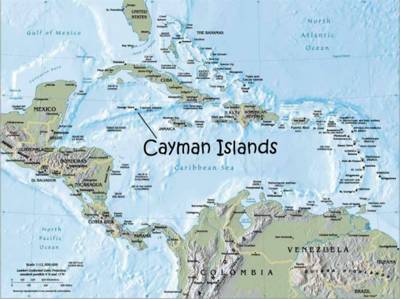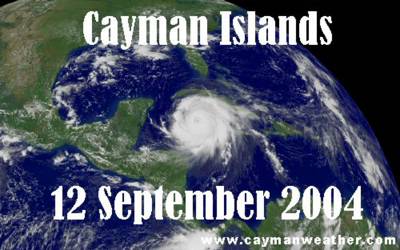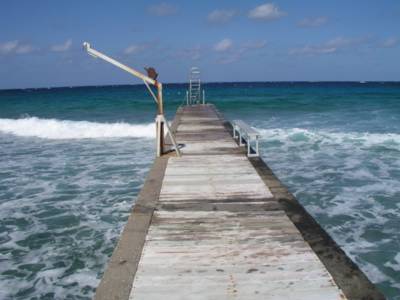
The islands are located south of the western end of Cuba, west of the island of Jamaica. One of the more interesting aspects of the flight was flying over Cuba, as Americans are denied access to the island nation by the U.S. government. But we can view it from 30,000 feet on our way to the Caymans. I was surprised that Cuba allowed American flights to fly over - after all, what advantage was it to them to allow capitalists a cheaper route to vacation destinations? - until I learned that under international rules, no country can deny another overflight rights except in cases where national security is at stake. Although U.S. carriers heading to the Caymans routinely fly over Cuba, until 1998 Cubana Airline had to make a costly detour over the Atlantic on daily flights to Montreal and Toronto as it was denied access to U.S. airspace.
After passing over Cuba, we began out descent to Grand Cayman Island, the largest of three islands that comprise the British territory (the other two islands are Little Cayman and Cayman Brac). As we approached the airport, I was shocked at my first low-altitude view of the island. It apparently had been hit even harder by Hurricane Ivan than I had imagined. On Sunday, September 12, 2004, Ivan, a powerful Category 5 hurricane with 165 mph winds, battered the Caymans with ferocious 150-mph winds, flooding homes, ripping off roofs and toppling trees three stories tall. While it was nearly a direct hit on Grand Cayman, the eye of the storm did not make landfall, passing instead over water just south of the island.


The Cayman Islands were somewhat better prepared than Grenada and Jamaica, which were slammed by Ivan the week before - though Jamaica was spared a direct hit. The Caymans have strict building codes and none of the shantytowns and tin shacks common elsewhere in the Caribbean. However, the airport runway was flooded and trees were wrenched from their roots.
Hundreds of people had left the Caymans on chartered flights, and most of the 150 residents of Little Cayman were brought to the big island before the storm. Officials reported 3,000 people had filled all shelters on Grand Cayman. Many people in Cayman Brac fled to caves that historically have provided shelter from bad hurricanes.
Following the hurricane, the residents returned annd began the slow rebuilding of their island. However, the Cayamns have been closed to tourism until just two weeks ago - we had arrived only the second week since the island had re-opened to outsiders.
From the airport, we took a bus to the resort, Cobalt Coast, which fortunately had already recovered from Ivan, and braved the waves for a shore dive along the north reef from the pier behind the resort.


No comments:
Post a Comment